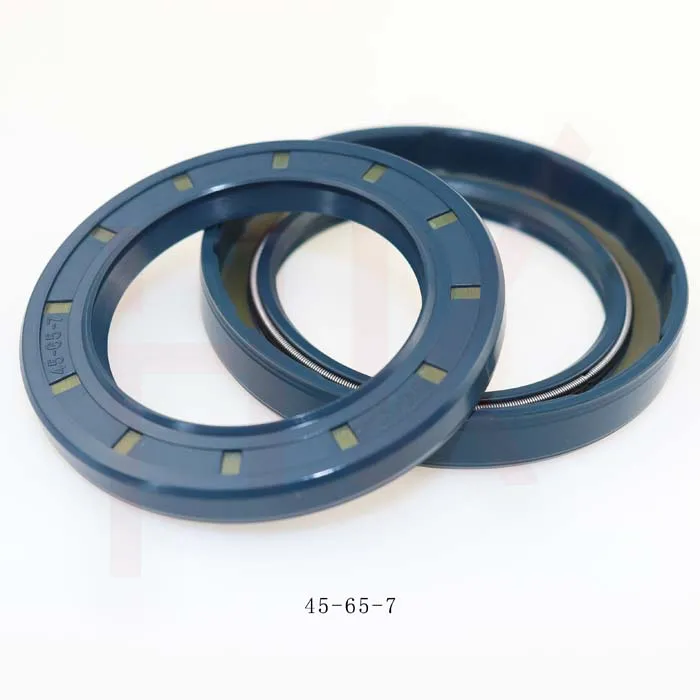Ноя . 19, 2024 10:00 Back to list
cylinder rod wiper
Understanding Cylinder Rod Wipers Essential Components for Hydraulic Systems
In the realm of hydraulic systems, efficient operation hinges on the seamless interaction of components. Among these components, cylinder rod wipers play a crucial role in ensuring the longevity and performance of hydraulic cylinders. This article delves into the significance of cylinder rod wipers, their functionality, materials, and maintenance considerations, highlighting why they are indispensable in various industrial applications.
The Role of Cylinder Rod Wipers
Cylinder rod wipers, often referred to as rod seals or scrapers, are designed to prevent contaminants from entering the hydraulic cylinder. These wipers are located at the outer end of the cylinder rod and function as the first line of defense against dirt, debris, and moisture. Their primary objective is to protect the inner workings of the hydraulic cylinder, ensuring that the hydraulic fluid remains clean and effective.
By keeping contaminants at bay, cylinder rod wipers help maintain the integrity of the hydraulic system. They reduce wear and tear on internal components, such as piston seals and bearings, thereby extending the lifespan of these parts and minimizing the risk of system failure. Moreover, effective wipers contribute to maintaining consistent hydraulic pressure, ensuring the system operates smoothly and efficiently.
How Cylinder Rod Wipers Work
The operation of a cylinder rod wiper is relatively straightforward. When the cylinder rod extends or retracts, the wiper seals against the rod's surface, creating a barrier that catches any dirt or particles. This action not only prevents contaminants from entering the cylinder but also helps to wipe the rod clean during its motion. As the rod moves, the wiper’s flexible material conforms to the rod's surface, ensuring a tight seal that effectively blocks foreign materials.
Most designs include a tapered or beveled edge that enhances the scraping action. This edge allows for efficient removal of any adhering particles while minimizing friction between the wiper and the rod. Furthermore, some models are constructed with integrated springs that push the wiper against the rod, ensuring constant contact and improving the seal’s effectiveness.
Materials Used in Cylinder Rod Wipers
Cylinder rod wipers are constructed from various materials, each selected for its unique properties that suit specific applications. Common materials include
cylinder rod wiper

1. Nitrile Rubber (NBR) Known for its excellent oil resistance, NBR is a popular choice for applications involving hydraulic fluids. It can withstand a broad temperature range and has good abrasion resistance.
2. Polyurethane (PU) This material offers superior wear resistance and is ideal for high-pressure applications. Its elasticity also helps in maintaining a good seal.
3. FEP or PTFE These materials are used in applications where extreme temperatures or chemical resistance is required. They are non-stick and can reduce friction, but might not be suited for all hydraulic scenarios.
4. Silicone In high-temperature applications, silicone wipers are beneficial due to their stability and flexibility. However, they may not have the same mechanical strength as other materials when it comes to abrasion.
Selecting the appropriate material for a cylinder rod wiper depends on factors such as the type of hydraulic fluid being used, working temperatures, and the specific environment in which the hydraulic system operates.
Maintenance and Replacement of Cylinder Rod Wipers
Regular maintenance of cylinder rod wipers is crucial to ensure their effectiveness and, by extension, the performance of the hydraulic system. Operators should routinely inspect wipers for signs of wear, such as cracks, tears, or deformities. If any damage is detected, it’s essential to replace the wipers promptly. Failure to do so can lead to contamination of hydraulic fluid, increased wear on internal components, and ultimately, system failure.
Additionally, during routine system maintenance, it’s advisable to clean the exposed surfaces of the cylinder rod. This practice helps in reducing the accumulation of debris and extends the life of the wiper itself.
Conclusion
In conclusion, cylinder rod wipers are fundamental components in hydraulic systems that protect against contamination and ensure optimal performance. Investing in quality wipers, understanding their materials and environmental compatibility, and maintaining them regularly can greatly enhance the efficiency and durability of hydraulic equipment. By appreciating their role, industries can minimize downtime and maximize productivity, making cylinder rod wipers a small yet vital element of hydraulic engineering.
-
Unlocking the Potential of Hydraulic Systems with Essential Sealing Solutions
NewsAug.06,2025
-
Unleash the Power of Your Hydraulic Systems with Our Premium Seal Kits
NewsAug.06,2025
-
Specialized Hydraulic Seal Kits for Breakers, Pistons, and Presses
NewsAug.06,2025
-
Revitalize Hydraulic Systems with Premium Repair and Seal Kits
NewsAug.06,2025
-
Fortify Your Cylinders with Premium Sealing Solutions
NewsAug.06,2025
-
Elevate Hydraulic System Reliability with Specialized Seal Kits
NewsAug.06,2025
-
TCN Oil Seal Metal Ring Reinforcement for Heavy Machinery
NewsJul.25,2025
Products categories
















